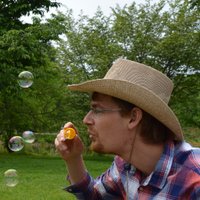
Jeremy Pike
@jeremyapike
ID: 975338579789479937
18-03-2018 11:50:13
46 Tweet
192 Followers
268 Following

🚨 JOB ALERT!! 🚨 Come and join us! Work with @EM_STP, me and the rest of the team on our CZI Science #VPCLEMKIT high resolution #CLEM project The Francis Crick Institute Deadline midnight GMT 17th December Please RT! crick.ac.uk/careers-study/…

JOB ALERT: We have an exciting new PDRA position as part of a collaboration between The Alan Turing Institute and @rosfrankinst. This is an amazing opportunity to develop #AI methods for large-scale cryo-EM/ET image datasets. 🚀 Please RT. DEADLINE: 23rd Jan 2022 cezanneondemand.intervieweb.it/turing/jobs/re…

Abdullah Khan is one of the smartest and most innovative humans I know. He has developed this incredible Bone Marrow Organoid, and now we are so excited to share this 🔥 preprint with the community. Congratulations Abs, Beth Psaila, et al.🎉 Check it out 👇biorxiv.org/content/10.110…


Thanks Mark Bates & Lenny Reinkensmeier for this super cool new 3D SMLM visualization tool! Worked brilliantly straight away :)

If you want to learn about #bioimageanalysis I've written a free & open textbook that tries to help: bioimagebook.github.io Thanks to the wonder of Executable Books & other modern magic it's not quite like a normal book... (thread) Edinburgh Univ OERs @NEUBIAS_COST BioImaging North America

Still time to get your 'ticket' for Images to Knowledge (I2K) 2022 📅 Join us virtually May 6 , 9, and 10, 2022 🔗Register & view the schedule here: tinyurl.com/I2K-2022 Details on talks and workshops on the website i2kconference.org #I2K2022 Center for Open Bioimage Analysis BioImaging North America



We are advertising a funded PhD project in photoacoustic imaging technology at Uni of Birmingham (findaphd.com/phds/project/p…). Project would suit a student with a background in engineering and physical sciences and an interest in developing medical imaging technology.

Can neural networks learn to predict cell fate? Can they reveal what they've learned? @UCL The Alan Turing Institute Amazing work by Christopher Soelistyo (LIDo ), Giulia (Biotechnology and Biological Sciences Research funded) in collaboration with @G_Charras. Out now in Nature Machine Intelligence nature.com/articles/s4225…





Choosing which clustering algorithm to use for SMLM data analysis is not an easy task. Our latest work in Nature Methods will hopefully make this choice easier ⚖️ 🔢🔺🔸#SMLM #superres #microscopy #analysis

Out in Science Magazine today: We used MINFLUX to measure stepping of kinesin in living cells in 2D and 3D. Very cool work spearheaded by Takahiro Deguchi in my group in collaboration with @KapiteinLukas and Malina Iwanski in Utrecht. science.org/doi/10.1126/sc…

How can machine learning help you to analyze your microscopy images? Find out at the "Deep Learning for Microscopy Image Analysis" course at the Marine Biological Laboratory (MBL) in Woods Hole from Aug 21-Sep 5! Applications are due 🚨 May 18 🚨 Read on for more! 👇 mbl.edu/education/adva…

I still can’t believe it, but I’ve been awarded a URF. Soon I’ll have positions available, but in the meantime I’d like to thank @WiebkeArlt for believing in me, Robin May - is now over on BLUESKY instead. davide calebiro Caroline Gorvin and Martin Hewison for help/prep and @Owen_lab_UoB for putting up with me


I've have a new #job 🥳 I am now the Advanced Image Analysis Specialist at Birmingham Tissue Analytics! Feel free to message me if you are interested in our portfolio of #SpatialBiology platforms and interested in what #quantitative #ImageAnalysis we could provide for your dataset 🔬🖥️📊

We're looking for two people to join our Research Data Science Service in the UoB Advanced Research Computing (BEAR) team at Uni of Birmingham, funded by our Institute for Data and AI. Come and work on innovative research projects all across our world-class university: blog.bham.ac.uk/bear/2024/11/2…